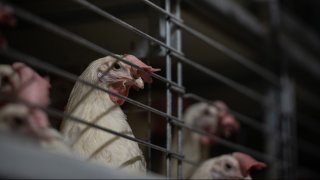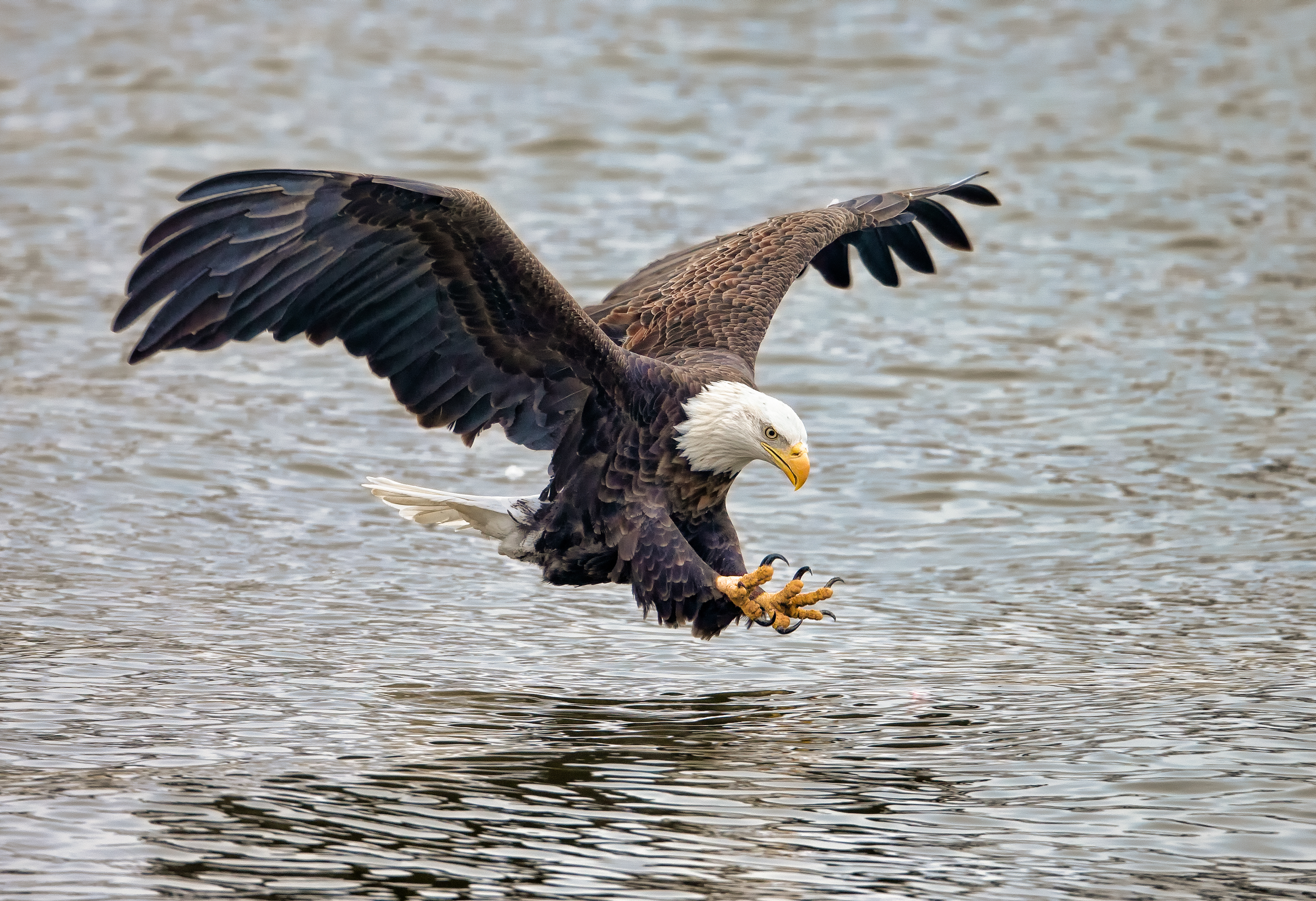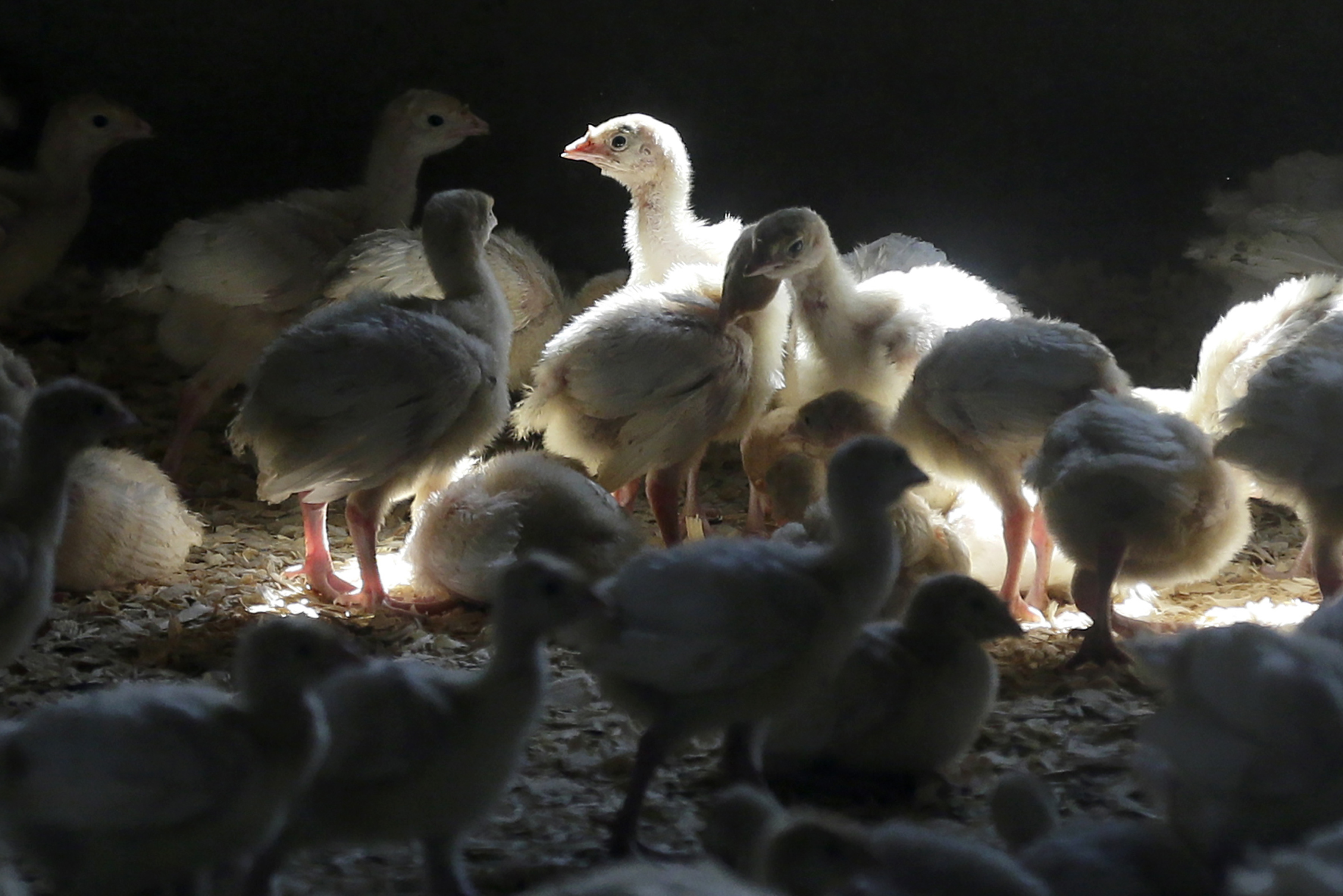
Brad Moline, a fourth-generation Iowa turkey farmer, saw this happen before. In 2015, a virulent avian flu outbreak nearly wiped out his flock.
Barns once filled with chattering birds were suddenly silent. Employees were anguished by having to kill sickened animals. The family business, started in 1924, was at serious risk.
His business recovered, but now the virus is back, again imperiling the nation's poultry farms. And this time, there's another pernicious force at work: a potent wave of misinformation that claims the bird flu isn't real.
“You just want to beat your head against the wall,” Moline said of the Facebook groups in which people insist the flu is fake or, maybe, a bioweapon. “I understand the frustration with how COVID was handled. I understand the lack of trust in the media today. I get it. But this is real."
While it poses little risk to humans, the global outbreak has led farmers to cull millions of birds and threatens to add to already rising food prices.
More Bird Flu Coverage
It's also spawning fantastical claims similar to the ones that arose during the COVID-19 pandemic, underscoring how conspiracy theories often emerge at times of uncertainty, and how the internet and a deepening distrust of science and institutions fuel their spread.
The claims can be found on obscure online message boards and major platforms like Twitter. Some versions claim the flu is fake, a hoax being used to justify reducing the supply of birds in an effort to drive up food prices, either to wreck the global economy or force people into vegetarianism.
“There is no ‘bird flu’ outbreak," wrote one man on Reddit. “It’s just Covid for chickens."
Other posters insist the flu is real, but that it was genetically engineered as a weapon, possibly intended to touch off a new round of COVID-style lockdowns. A version of the story popular in India posits that 5G cell towers are somehow to blame for the virus.
As evidence, many of those claiming that the flu is fake note that animal health authorities monitoring the outbreak are using some of the same technology used to test for COVID-19.
“They’re testing the animals for bird flu with PCR tests. That should give you a clue as to what’s going on,” wrote one Twitter user, in a post that’s been liked and retweeted thousands of times.
In truth, PCR tests have been used routinely in medicine, biology and even law enforcement for decades; their creator won a Nobel Prize in 1993.
The reality of the outbreak is far more mundane, if no less devastating to birds and people who depend on them for their livelihood.
Farmers in states like Wisconsin, Iowa, Nebraska and South Dakota have already culled millions of fowl to prevent the outbreak from spreading. Zoos around the U.S. have moved exotic bird exhibits indoors to protect their animals, and wildlife authorities are discouraging backyard bird feeding in some states to prevent the spread by wild birds. The disease has also claimed bald eagles around the country.
The first known human case of the H5N1 outbreak in the U.S. was confirmed last month in Colorado in a prison inmate who had been assisting with culling and disposing of poultry at a local farm.
Most human cases involve direct contact with infected birds, meaning the risk to a broad population is low, but experts around the country are monitoring the virus closely just to be sure, according to Keith Poulsen, director of the Wisconsin Veterinary Diagnostic Laboratory, an agency that tracks animal disease in part to protect the state's agricultural industries.
“I can guarantee you, this is the real deal,” Poulsen told The Associated Press. “We certainly aren’t making this up.”
Poultry farms drive the local economy in some parts of Wisconsin, Poulsen said, adding that a devastating outbreak of avian flu could create real hardships for farmers as well as consumers.
While the details may vary, the conspiracy theories about avian flu all speak to a distrust of authority and institutions, and a suspicion that millions of doctors, scientists, veterinarians, journalists and elected officials around the world can no longer be trusted.
“Americans clearly understand that the federal government and major media have lied to them repeatedly, and are completely corrupted by the pharmaceutical companies,” said Dr. Joseph Mercola, an osteopath whose discredited claims about vaccines, masks and the coronavirus made him a prominent source of COVID-19 misinformation.
Mercola's interest in the bird flu dates back years A 2009 book for sale on his website, which Mercola uses to sell unproven natural health remedies, is titled “The Great Bird Flu Hoax.”
Polls show trust in many American institutions — including the news media — has fallen in recent years. Trust in science and scientific experts is also down, and along partisan lines.
Moline, the Iowa turkey farmer, said he sympathizes with people who question what they read about viruses, given the last two years and bitter debates about masks, vaccines and lockdowns. But he said anyone who doubts the existence or seriousness of the avian flu doesn't understand the threat.
The 2015 outbreak was later determined to be the most expensive animal health disaster in U.S. history. Moline's farm had to cull tens of thousands of turkeys after the flu got into one of his barns. Workers at the farm now abide by a hygiene policy meant to limit the spread of viruses, including using different pairs of boots and clothes for different barns.
Conspiracy theories are bound to flourish during times of social unrest or unease, according to John Jackson, dean of the Annenberg School of Communication at the University of Pennsylvania.
Before the internet, there were likely just as many people who privately doubted explanations for big events, Jackson said. But they enjoyed limited opportunities to connect with like-minded individuals, few chances to win new converts and no way to broadcast their views to strangers.
Now, the conspiracy theories that gain wide popularity — such as the QAnon movement or discredited claims about COVID-19 — work because they give believers a sense of control in a rapidly changing, interconnected world, Jackson said. While they can emerge after disasters, assassinations or plane crashes, they can also appear during times of social upheaval or rapid change.
“There isn't a phenomena on the planet, whether it’s the avian flu or 5G, that isn’t already primed for conspiracists,” Jackson said. “Now we have coronavirus, which has traumatized us so profoundly ... we look at this same idea of bird flu with completely new eyes, and we bring different kinds of conspiracy to it.”
Claims that the avian flu is a hoax used to drive up food prices also highlight real-world concerns about inflation and food shortages. Worries that the flu is somehow linked to 5G towers underscore anxieties about technological change. Suggestions that it will be used to mandate vegetarianism, on the other hand, reflect uncertainties about sustainable agriculture, climate change and animal welfare.
By creating explanations, conspiracy theories can offer the believer a sense of power or control, Jackson said. But he said they also defy common sense in their cinematic fantasies about vast, sprawling conspiracies of millions working with clockwork efficiency to undermine human affairs.
“Conspiracy theories rest on the idea that humans have the capacity for keeping secrets," Jackson said. "But they underestimate the reality that we aren’t very good at keeping them.”



